Gallery ALL, Los Angeles
The city’s new design outpost opens with an exhibition showcasing China’s innovative take on contemporary design

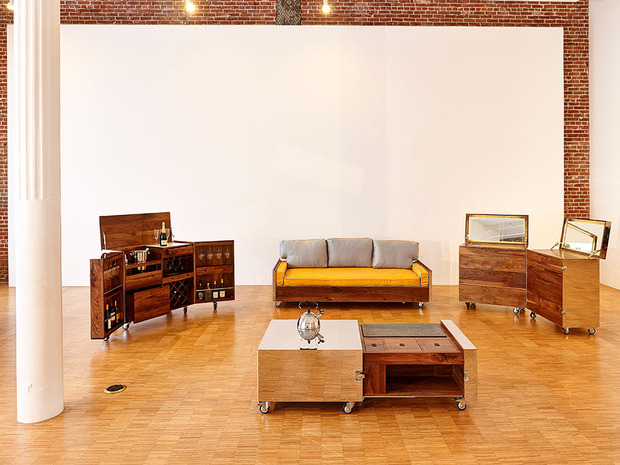
The impact of Ai Weiwei’s conceptual works has been immensely responsible for the growing understanding of his personal plight—and that of other artists—in a censored society. Even in these circumstances, artists and designers in China continue to create provocative works that challenge the culture they are living in. Making the case for new innovative design from China, Gallery ALL recently opened in downtown LA’s iconic Bradbury Building to showcase Chinese design and create an artistic dialogue that spans from East to West and around the world.

Founders Yu Wang (an architect) and Qinqyun Ma (the Dean at the USC School of Architecture) named their new project Gallery ALL to emphasize their goal of creating a crossroads for emerging designers, cutting-edge experimental design, and a center for educational ideas. Walking around the light-filled space with the founders and designers Zhoujie Zhang and Naihan Li (who are featured in the first show) proved just how significant and exciting Gallery ALL promises to be.
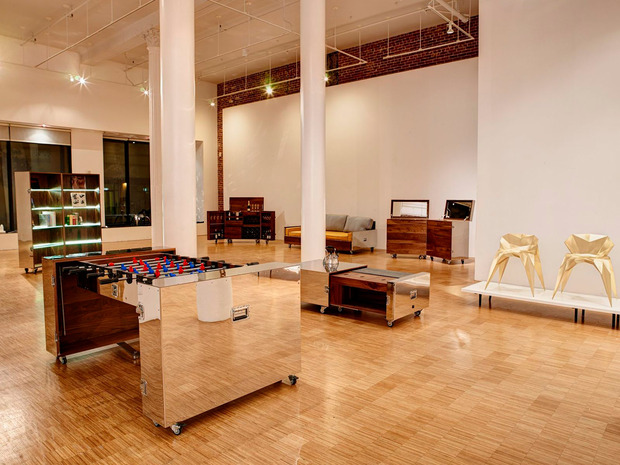
Recently you see this emerging phenomenon of design being part of the cultural concern.
“The last 30 years in Chinese contemporary art capitalized on political uncertainty, social transformation, and even traditional historical manipulation in the fine arts,” says Qinqyun Ma. “Recently you see this emerging phenomenon of design being part of the cultural concern. That will have this force that will push the industry, the lifestyle, and the environment into something that is unseen before.”
The inaugural exhibit showcases the work of Zhoujie Zhang and Naiham Li, who Qinqyun Ma and Yu Wang consider to be the future of Chinese design. Zhoujie Zhang considers himself to be both a designer and maker of digital objects. He created software to scan the body, which a computer reads to create the chair. “Everyone has their own chair. I designed the DNA of how the chair grows,” he says. Currently the chairs are made in polished stainless steel, but eventually could be made in wood, plastic or other materials. There will be a hologram projection on the wall so gallery visitors can see the chair grow to the body, making each chair custom and how the technology moves from 2D to 3D.
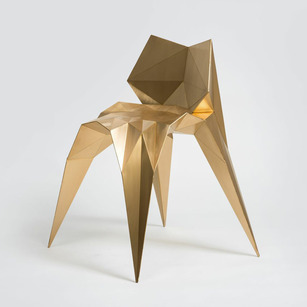
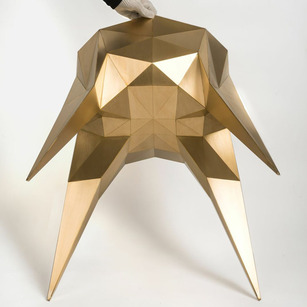
Zhoujie (who spent three years studying the artisanal process of welding for his craft) makes each piece of furniture in flat sheets of steel, then laser-cuts geometric shapes and forms the structure in an origami-like fashion. Gallery ALL commissioned a new series from Zhoujie, a tornado table and chairs made in brushed brass. He was inspired by extreme minimalism in revered classic Chinese paintings and created a digitally simulated a tornado force in a few seconds, then took two years to develop the shape that started as a vessel and evolved into a table. The goal of the table was to harness the look of movement in welded metal by employing parametric mathematics to create the form.
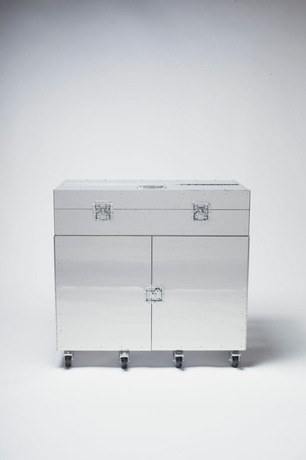
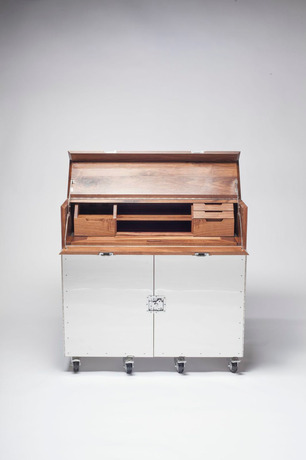
Moving to the part of the gallery filled with large stainless steel boxes on casters, Naihan Li shows us her Crate Series reimagined for 2014. Naihan has worked with Ai Weiwei as a coordinator for Jinhua Architecture Park in Zhejiang Province and as an architect, exhibition designer, creative director, and opened her own furniture studio where she has built some of the tools she needs to make her furniture series. When asked by Gallery ALL to make something for LA, Naihan immediately thought of stainless steel.
The idea for the Crate Series (originally made in basic plywood, now in polished black walnut) struck Naihan four years ago, when she was trying to move into a studio in Caochangdi Arts District—central Beijing’s artist village started by Weiwei in the ’90s. She arrived to discover the whole village under threat of demolition. The often volatile lifestyle of Chinese artists inspired her to make pieces that can be packed up and easily moved.
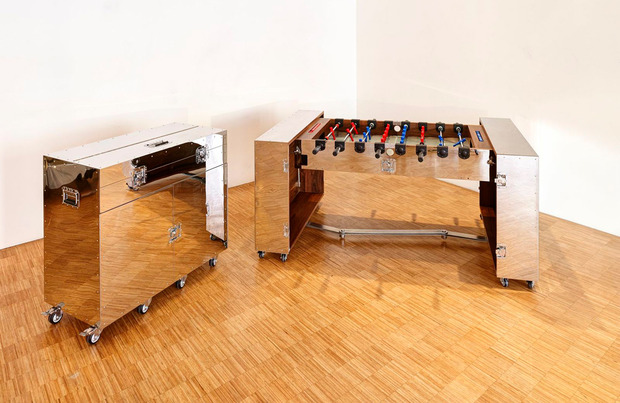
In the Crate Series, everything can fold, latch and roll. When closed, the pieces look like music equipment for a band on tour. “It’s a Chinese phenomenon, people migrate so much.” The 2014 Crate Series includes the designer’s vision for a sofa, dresser, bookshelf, tea table, European style desk, bar, chair and foosball table. The bar cart’s stunning array of features includes pullout counters and drawers, and places to hide away a precious whiskey collection. At home Naihan has built herself a custom bar set-up with an icemaker and fridge for making cocktails.
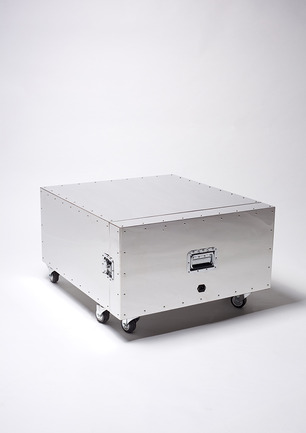
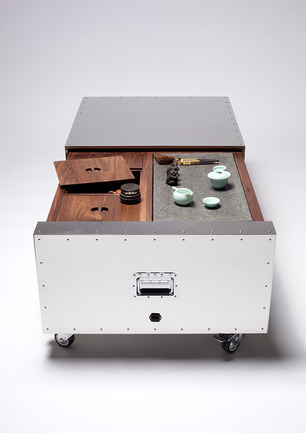
The Chinese are knows for a lack of sense of humor, but the truth is people love enjoying themselves. They have hope.
Having spent the last 12 years learning how to make tea, the designer explains, “This has everything for the process of making good tea. Drinking tea this way has revived in China and is becoming popular again. Now business meetings in China are done through tea drinking rather than alcohol, it is more noble and part of revitalizing Chinese culture.” The concept of Naihan’s furniture, that it can move as fast as a Chinese artist or anyone else with a migrant lifestyle, can evolve to include any piece of furniture needed for a house or apartment.
“The Chinese are known for a lack of sense of humor, but the truth is people love enjoying themselves. They have hope,” she says. And, if the inspirational works at Gallery ALL are any indication, art and design from China certainly has a bright future.
Images of gallery exterior and interior courtesy of Weldon Brewster, all other images courtesy of Gallery ALL












